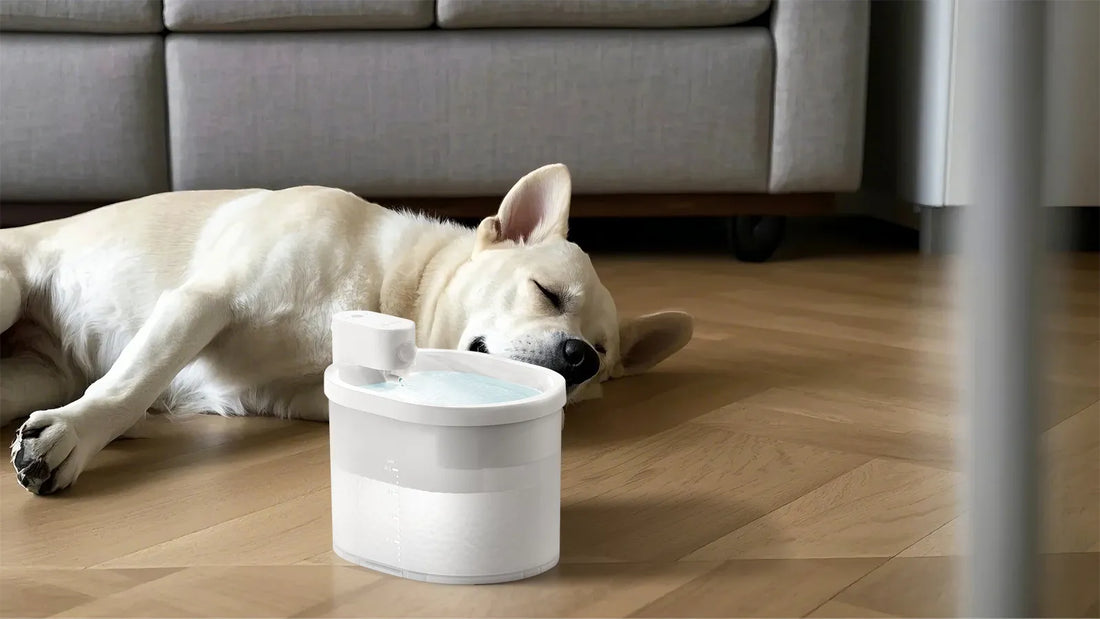If you've noticed that your cat is drinking a lot of water, you might be wondering if this is normal behavior. Cats are known for their independent and sometimes mysterious nature, and changes in their habits can be concerning. While increased water intake can sometimes be harmless, it can also signal underlying health issues. This article will explore the reasons behind your cat's increased thirst and help you determine whether it's time to consult a veterinarian.
Understanding Your Cat's Water Needs
Cats, like all living creatures, need water to survive. However, their water requirements can vary based on factors such as age, diet, and activity level. On average, a healthy cat should drink about 60-80 milliliters of water per kilogram of body weight each day. This means a 4-kilogram cat would typically consume around 240-320 milliliters of water daily. Keep in mind that cats on a wet food diet may drink less water since their food contains moisture, while those on a dry food diet may drink more.
Common Reasons for Increased Water Intake
There are several reasons why your cat might be drinking more water than usual. Some of these reasons are completely normal, while others may require medical attention.
1. Dietary Changes
If you've recently switched your cat's diet, this could be the reason for their increased thirst. Dry food contains less moisture than wet food, so cats on a dry food diet often drink more water to compensate. Similarly, if you've started adding more salty treats to their diet, this could also lead to increased water consumption.
2. Hot Weather or Increased Activity
Just like humans, cats may drink more water during hot weather or after increased physical activity. If your cat has been playing more or spending time outdoors in the heat, their increased water intake is likely a normal response to stay hydrated.
3. Aging
As cats age, their bodies undergo various changes, including a decrease in kidney function. This can lead to increased thirst as their kidneys work harder to filter waste from their blood. While this is a common part of aging, it's important to monitor your cat's health and consult a veterinarian if you notice any other concerning symptoms.
Potential Health Concerns
While increased water intake can be normal in certain situations, it can also be a sign of underlying health issues. Here are some conditions that may cause your cat to drink more water:
1. Diabetes
Diabetes is a common condition in cats, especially in older or overweight individuals. One of the key symptoms of diabetes is increased thirst, as the body tries to flush out excess glucose through urine. If your cat is drinking a lot of water and also showing signs of weight loss, increased appetite, or lethargy, it's important to seek veterinary care.
2. Kidney Disease
Kidney disease is another common cause of increased thirst in cats. The kidneys play a crucial role in filtering waste from the blood, and when they are not functioning properly, cats may drink more water to help flush out toxins. Other symptoms of kidney disease include weight loss, vomiting, and changes in urination habits.
3. Hyperthyroidism
Hyperthyroidism is a condition where the thyroid gland produces too much thyroid hormone. This can lead to increased metabolism, weight loss, and increased thirst. If your cat is drinking a lot of water and also showing signs of hyperactivity, weight loss, or a poor coat condition, it's important to consult a veterinarian.
When to Consult a Veterinarian
While increased water intake can sometimes be harmless, it's important to monitor your cat for any other concerning symptoms. If your cat is drinking a lot of water and also showing signs of weight loss, lethargy, changes in appetite, or unusual behavior, it's time to consult a veterinarian. A thorough examination and diagnostic tests can help determine the underlying cause of your cat's increased thirst and ensure they receive the appropriate treatment.
How to Monitor Your Cat's Water Intake
If you're concerned about your cat's water intake, there are several ways to monitor their habits. Start by measuring the amount of water you provide each day and tracking how much they drink. You can also observe their behavior to see if they are visiting the water bowl more frequently than usual. Keeping a record of their water intake and any other symptoms can help your veterinarian make an accurate diagnosis.
Tips for Encouraging Healthy Hydration
Ensuring your cat stays properly hydrated is essential for their overall health. Here are some tips to encourage healthy hydration:
1. Provide Fresh Water Daily
Make sure your cat always has access to fresh, clean water. Change the water in their bowl daily and clean the bowl regularly to prevent bacteria buildup.
2. Consider a Water Fountain
Some cats prefer running water, and a water fountain can encourage them to drink more. The sound and movement of the water can be more appealing to cats than a stagnant bowl.
3. Offer Wet Food
If your cat is on a dry food diet, consider incorporating wet food into their meals. Wet food contains more moisture and can help keep your cat hydrated.
4. Monitor Their Environment
Ensure your cat's environment is comfortable and not too hot. Provide shaded areas and cool spots for them to rest, especially during warmer months.
If your cat is drinking a lot of water, it's important to pay attention to their overall health and behavior. While increased thirst can sometimes be normal, it can also be a sign of underlying health issues. By monitoring your cat's water intake and consulting a veterinarian when necessary, you can ensure they stay healthy and hydrated. Remember, your cat's well-being is in your hands, and taking proactive steps can make all the difference.

![[🎃Halloween Sale]UAHPET Stainless Steel Self-Cleaning Cat Litter Box](http://www.uahpet.com/cdn/shop/files/1-cat-litter-box.jpg?v=1761890851&width=1600)












